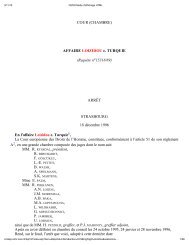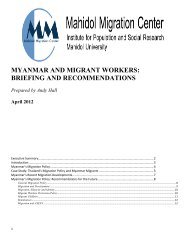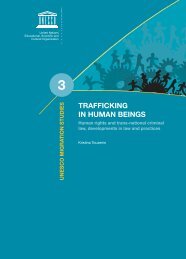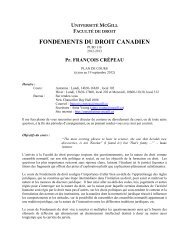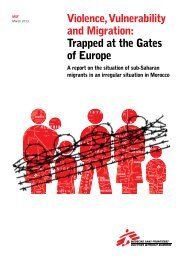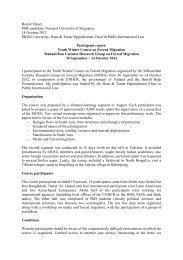Preventive Detention, Suspected Terrorists, and War
Preventive Detention, Suspected Terrorists, and War
Preventive Detention, Suspected Terrorists, and War
Create successful ePaper yourself
Turn your PDF publications into a flip-book with our unique Google optimized e-Paper software.
COLE FINAL<br />
7/1/2009 12:43 AM<br />
698 CALIFORNIA LAW REVIEW [Vol. 97:693<br />
authority. 14<br />
In short, preventive detention should be limited to situations that cannot<br />
be adequately addressed through the criminal justice system. The post-9/11<br />
roundups of thous<strong>and</strong>s of persons with no proven ties to terrorism 15 reveal the<br />
need for reform aimed at restricting the use of sub rosa or de facto preventivedetention<br />
powers. At the same time, the longst<strong>and</strong>ing <strong>and</strong> still unresolved<br />
dispute over the scope of “enemy combatant” detention—in addition to<br />
fundamental separation-of-powers concerns—suggests that a statute expressly<br />
addressing that issue is necessary. This Article argues that comprehensive<br />
reform is necessary <strong>and</strong> should be guided by the constitutionally founded<br />
principle that any preventive-detention regime must be predicated on a showing<br />
that criminal prosecution cannot adequately address a serious problem of<br />
dangerousness. Part I will briefly describe the existing statutory authorities that<br />
the government used—<strong>and</strong> in many instances misused—to effectuate<br />
preventive detention after 9/11. The laws in question include immigration law,<br />
the material witness statute, broad criminal statutes penalizing material support<br />
of terrorist groups, <strong>and</strong> the Authorization for Use of Military Force (AUMF)<br />
against al Qaeda, which the Supreme Court has interpreted to authorize<br />
detention of at least some “enemy combatants.” 16 The government used each of<br />
these measures to achieve preventive detention in the absence of a law<br />
expressly authorizing detention of suspected terrorists or al Qaeda fighters. In<br />
many instances, the government has exploited these laws for purposes they<br />
were not designed to serve.<br />
Part II will address the constitutional principles that should govern<br />
preventive detention. <strong>Preventive</strong> detention implicates fundamental rights under<br />
the Fourth <strong>and</strong> Fifth Amendments <strong>and</strong> the Suspension Clause. I will argue that<br />
together, these provisions reflect a presumptive constitutional obligation to<br />
address dangerous conduct through criminal prosecution, conviction, <strong>and</strong><br />
incarceration. Accordingly, the Supreme Court has struck down preventivedetention<br />
laws that are triggered by proof of dangerousness alone. 17 In most<br />
settings where the Court has upheld preventive detention, criminal prosecution<br />
<strong>and</strong> incarceration cannot adequately address a particular danger to the<br />
community. As a constitutional matter, then, preventive detention should be<br />
tolerated only in those rare circumstances where dangerous behavior cannot be<br />
addressed through the criminal justice system.<br />
Part III applies the above principle by proposing a set of specific reforms<br />
14. See, e.g., Al-Marri v. Pucciarelli, 534 F.3d 213 (4th Cir. 2008) (addressing whether<br />
enemy-combatant authority extended to a foreign national lawfully residing in the United States,<br />
who allegedly was associated with al Qaeda <strong>and</strong> had come to the United States to commit terrorist<br />
acts), vacated as moot, Al-Marri v. Spagone, 2009 WL 564940 (Mar. 6, 2009).<br />
15. See Cole, supra note 5, at xx-xxiii, 25-26.<br />
16. Hamdi, 542 U.S. at 517-19.<br />
17. See, e.g., Foucha v. Louisiana, 504 U.S. 71, 84-88 (1992).



